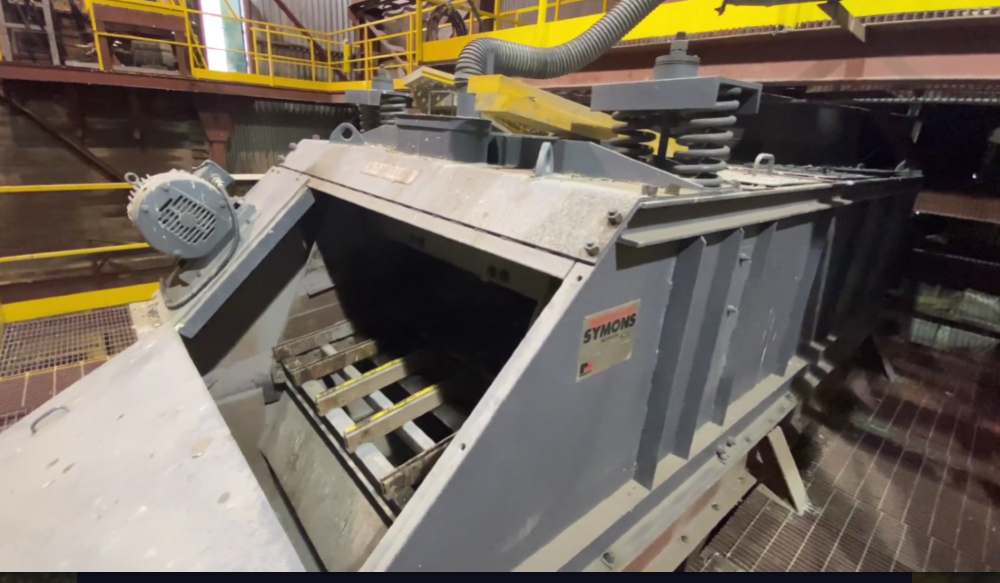After inventing the precious metal stream back in 2004 Silver Wheaton (TSX: SLW; NYSE: SLW) has noticed the landscape getting more crowded.
Speaking to a lunchtime crowd at Toronto's King Edward Hotel, Silver Wheaton's CEO, Randy Smallwood, noted that not only had traditional royalty companies such as Franco-Nevada (TSX: FNV; NYSE: FNV) and Royal Gold (TSX: RGL) switched into precious metal streams in a big way but even private equity firms were starting to get in on the action.
"Truthfully I enjoy the competition," Smallwood told the crowd. "And I'd be a little worried if we were getting every asset we were going after. It would indicate that we were paying too much."
Unlike a royalty company which buys existing royalties on a gold mine or a development project, metal streams are based on the idea of providing a prospective miner with upfront cash, usually for development or expansion of a project, in exchange for precious metal production at a later date. Silver Wheaton still pays for the metal when it is delivered, but it pays a pre-determined and discounted price.
The key to the success of the business model is that both the initial "balloon" payment made to the company and the later discounted payments for the metal are fixed costs, which in today's volatile price environment is an attractive proposition to investors.
Another important element to the success of the model is the arbitrage it is able to exploit. The arbitrage is especially evident in silver production, as most silver comes out of base metal mines. When a base metal company mines the precious metal, however, market valuations are not as robust as when a pure play or a precious metal company takes hold of the production.
The anomaly creates the potential for a "win-win" Smallwood explains as the Silver Wheaton is able to pay a producer more for its silver production than the market is valuing it at, and then by virtue of it being a precious metal company, Silver Wheaton gets a higher valuation on that same production once it moves into its portfolio.
"So what you will see is that the stock prices for both companies will go up after one of our deals is announced," he says. "It is a very unique situation in the mining business as usually there is one winner and one loser."
And while such an arbitrage opportunity has invited more competition, as arbitrage opportunities always do, Silver Wheaton's first mover status still has it firmly entrenched as the undisputed heavy weight in the space.
The company's roughly $8.8 billion market cap is almost bigger than Franco-Nevada and Royal Gold's combined and its earnings for the first half of the year of $204 million is a good deal more than Franco-Nevada's and Royal Gold's combined totals.
Another distinguishing factor between the companies is the metals they pursue. While Silver Wheaton has more recently ventured into the gold space, it is still predominantly a silver company with roughly 75% of revenue coming from silver and the remainder from gold. Both Royal Gold and Franco Nevada have a decidedly gold bias.
Unlike its two competitors, specializing in silver means Silver Wheaton also gets to be one of the biggest players in the metal, with over 1.6 billion oz of global reserves (a combination of reserves, measured and indicated resources and inferred resources). That amount ranks it second only to Fresnillo (LON: FRES) in terms of total reserves and resources.
"And all of those resources are active," Smallwood says. "We have no stagnate ounces in our portfolio." A stagnate ounce is one that has been outlined in a resource estimate but is not part of an active mine or development project.
It's that ability to acquire so much metal that is at least partially responsible for the company's market success. Whereas back in 2004, in the early days of the company's founding, it had 1 oz of silver behind every share of the company, now there is 6 oz. And Smallwood assures that future deals are only made if they can add to that amount.
What has allowed Silver Wheaton to steadily build up those ounces is an emphasis on low cost projects — the type of mines with margins large enough to ensure that operations will keep humming along even when the inevitable slump in the commodities price arises.
Such is the case today. But with an average production cost in the US$4 per oz range, the company has plenty of wriggle room even with silver in the US$20 per oz. range.
The main points of vulnerability are the price it pays for the metal and its upfront payment to mining companies. Smallwood explains that the discounted cash flow model used to value a given amount of mine production is roughly based on current spot prices and the forward price curve.
The advantage to the methodology is that it takes the risky game of forecasting metal prices out of the equation. The downside is that when prices fall significantly below spot, Silver Wheaton can get hurt on a deal done at a specific level. To mitigate against such downside Smallwood says that the company searches for projects that have resource expansion upside, with the idea being that future growth in resources — ounces that are not priced into the current valuation of a project — will make up for any losses on the spot price.
Another form of protection is to not always be acquiring.
While Silver Wheaton has carved out a reputation as being an aggressive pursuer of assets (the company currently has 19 metal stream deals in its portfolio), Smallwood points out that between the deal with Augusta Resources (TSX: AZC) for it Rosemont mine in January of 2010 and its deal with Hudbay Minerals (TSX: HBM) on its Constancia project in January of 2012, almost two years elapsed.
"We don't always want growth," he says "We are patient enough to wait if the prices are high and the sentiment is overly optimistic."
Of course the converse is true now, and as can be expected Silver Wheaton is busy scouring the globe for projects with low cost potential.
Indeed, Smallwood says the Silver Wheaton has grown its staff recently as its appetite for doing deals increases as prices continue to scuttle.
So while many in the mining industry worry about job security in times of depressed prices, it is good to know that a few companies have figured out a model that calls for employment expansion when times are tough.
If only it didn't take so few people to run a metals streaming company. Both royalty companies and streaming companies are notorious for having small staffs. In the case of silver Wheaton that means just 28 people at its head office in Vancouver.
So don't expect its recent spate of hiring to have too much of an impact on the national unemployment numbers.
To read more Northern Miner articles, click here





Comments